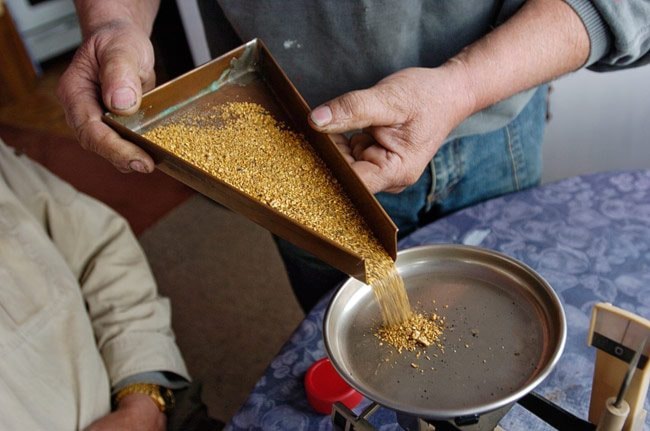Dawson City
The sudden loss of 50,000 full time jobs in Alberta so far this year due to the global dip in the price of oil which has now been compounded by the shocking election of an NDP government in Edmonton have combined to produce a phenomenon not seen in the Yukon since Pierre Trudeau shut down the oilpatch in 1978-79 with his disastrous National Energy Policy.
Unemployed Alberta roughnecks are stampeding to the Klondike, most in brand new $50,000 pickups pulling $100,000 RVs, hoping to find seasonal employment in the goldfields to send money home to their families to weather Alberta’s double-storm.
The Bonanza Gold campground, located just before crossing the Klondike River outside Dawson, seems a little like some scenes from John Steinbeck’s Grapes of Wrath, with unemployed men and some women sitting around campfires drinking beer and telling horror stories about the hard times back home.
“My wife is still working,” said Sean Faulkner, 38, from Carstairs, “and making the mortgage payments but I haven’t contributed a nickel since last August so I’m here scrambling for some kind of job to send money home. All I want to do is work 15 hours a day all summer, no days off, and help her out. Our monthly obligations are greater than her income and, if I don’t find work, I’ll keep looking elsewhere. We’ve had it with Alberta but at least we know we’ll keep our home. I have lots of friends who can’t say the same.”
Faulkner is an experienced hoe, loader, grader and dozer operator with no gold mining experience and no knowledge of how to deal with Yukon permafrost. He’s already been here a month with no luck and is putting all his chips on this weekend’s annual Gold Show when most of the miners from distant creeks come to town for the annual meeting of the Klondike Placer Miners’ Association. If he has no luck this weekend, he may have to look elsewhere.
“They tell me the best way to find a job here is to hang out in the bars every night but I can’t afford that, mentally or financially. It’s depressing enough to me without adding booze to the mix.”
This influx of young, healthy, hard-working Albertans can also effect experienced gold miners who suddenly have lots of competition for not many Klondike jobs.
Another Albertan, who didn’t want to be named, says he cleared $8,000 a month last year working for one placer outfit, but the miner was swamped with younger Alberta guys before he returned and doesn’t need him this year. Now he’s just waiting for the gold show to talk to other miners he knows who are coming to town. It’s the only time of the season you can find all the miners in one pile. He’s sure he’ll get on with somebody, but he thinks he’ll have to settle for less money.
The Klondike symbol of the 1898 Gold Rush was backpackers climbing the Chilkoot and the symbol for half of the 20th century was working dredges. When Trudeau gutted the oilpatch 35 years ago, the symbol was a parade of lowboys coming up the Alaska Highway carrying D-8’s and homemade sluice boxes. (One legendary Alberta miner went home broke because he sluiced all summer with his riffles in backwards.)
But this time it’s different. The symbol for 2015 is shiny new pickups pulling expensive RVs driven by 35-year-old roughnecks who hope they made the right decision and will find enough gold or money to keep up the payments on both.
Visually, it bears little resemblance to Steinbeck’s Grapes of Wrath, but actually, it’s eerily similar. The Klondike experienced a mini-boom of unemployed cheechakos during The Great Depression and history is definitely repeating itself in 2015.
I know because I’m camped right in the middle of it, at the age of 68, trying to relive my childhood.
Doug Sack was the first sports editor of the Yukon News and later a longtime sports editor of the Whistler Question and a columnist and features writer for Ski Canada magazine. He is currently semi-retired in Whitehorse.
